The digestive system is made up of two main parts.
The tubular Gastrointestinal tract and the accessory structures.
Food and liquids move through the canal after they are swallowed. That is where they get digested, absorbed, and leave the body as feces.
This system aims to obtain the required energy, nutrients, and water that the body cannot produce for itself to keep us functional and alive.
The gastrointestinal tract, also known as the alimentary canal, is a continuously connected pipe that opens from both sides to the external environment.
Having such a single hollow structure made it possible to swallow a camera in a shape of a pill and analyze the findings after retrieving the camera from the stool. This examination is called capsule endoscopy.
Food, water, and medications follow the same path in this muscular tube; most get absorbed before exiting the anus by a process called defecation.
The Accessory structures are organs that connect to the alimentary canal to assist in the digestion process.
The teeth perform a mechanical breakdown of food into smaller pieces, and the salivary glands, pancreas, liver, and gallbladder secrete enzymes in the alimentary canal to perform chemical digestion.
The digestive process includes the following six activities:
Ingestion, taking the food by the mouth, and the act of swallowing it.
Propulsion is the voluntary act of swallowing, driving the passage of food from the mouth into the pharynx. Plus, the Involuntary smooth muscle contractions in the GI this is called peristalsis.
Mechanical breakdown includes chewing, and CHURNING is degrading the food into smaller pieces by gastric contractions.
Chemical digestion: is achieved by the secretions of acids and enzymes to convert nutrients into their simpler form for faster and easier absorption.
Absorption is the passage of food from the digestive system into the blood and lymph system.
Excretion, also called defecation, is the discharge of indigestible waste called feces or stool.
By ingestion, The mouth is the first organ to get the food into the digestive system. Here, three processes happen.
The teeth achieve mechanical function by mastication or chewing.
The chemical reaction we will talk about next,
Not to forget one more function in the mouth, and it is oral absorption.
This is not the primary function of the mouth. Still, The sublingual highly vascular area can absorb simple Sugar such as glucose and other substances like nitro spray in a heart attack treatment or other drugs like lorazepam tabs.
Three pairs of salivary glands secrete approximate daily amounts of 1 liter of saliva, mainly made of water.
Saliva moistens the food and creates a small, lubricated lump called BOLUS. It is easily swallowed.
Salivary glands lead the chemical digestion in the mouth. Amylase breaks down complex carbohydrates into simpler sugars that are easier to absorb.
The esophagus connects the mouth via the oropharynx and the stomach via a sphincter called gastric cardia. This sphincter plays a role in preventing the reflux of food and acids into the esophagus.
Within the esophagus, there is no active digestive role, no absorption, only transportation of food.
Peristalsis, as we mentioned earlier, starts in the esophagus and ends in the rectum aiming to keep the food moving in one direction. This process will also contribute to the mechanical breakdown and absorption of the nutrients at different levels along the way.
The stomach is a J-shaped muscular pouch, the most distensible part of the digestive system. An average stomach holds 1 to 2 liters of food with a maximum capacity of 4 liters.
Three layers of smooth muscles wrap around this organ. The mucus covers the inner layer to prevent the gastric acid from burning its cells.
Similar to ulcers caused by anti-inflammatory drugs, emotional stress such as worry, anger, and sadness may increase gastric acid secretions and induce peptic ulcers.
This pouch ends at the pyloric sphincter, where it connects to the duodenum.
The stomach goal is to transform the bolus into chyme, a semifluid mass of partially digested food mixed with digestive secretions. About 20% of alcohol is absorbed within the stomach.
This muscular pouch acts as storage while keeping the food, performs mechanical digestion by mixing and emptying gastric contents for several hours after ingestion. This process is also called churning.
Gastric acid at PH of 2 dissolves food fibers, kills swallowed microbes, and activates the gastric enzyme pepsin to degrade complex protein molecules.
Within this area, the absorption of water, alcohol, and some medications begins.
In the hydrochloride acid, we find intrinsic factor it has an essential role in carrying the vitamin b12 into the distal part of the intestines for absorption.
Small intestine is formed of three segments : DUODENUM, JEJUNUM, ILEUM.
A new, less acidic environment starts in the Small intestine to neutralize the PH of the highly acidic CHYME.
Small intestines extend for about 6 meters. The alkaline state is achieved by the secretion of bicarbonate and bile salts.
Peristalsis continues along the small intestines; the contraction of smooth muscles degrades food, and this is called segmentation. This process generates audible sounds heard through a stethoscope.
Villi are tiny protruded cells in the small intestines specialized in the absorption of nutrients.
The pyloric sphincter attaches the stomach to the duodenum.
Accessory organs such as the pancreas, liver, and gall bladder connect and secrete their digesting enzymes in the duodenum.
Within this segment, the process of chemical breakdown of nutrients continues. Bile secreted by the liver and gall bladder digest fats and some vitamins.
Bicarbonates secreted by the pancreas bring up duodenal PH to around 6.
The absorption of iron, calcium, fats, and sugars occurs in this segment.
In the JEJUNUM: the majority of absorptions happen, including the protein, carbohydrates, and fat, in addition to liposoluble vitamins ADEK, which absorption starts in the duodenum but it accelerates in this segment, in addition to some other hydrosoluble vitamins as vitamin C and B.
ILEUM: is the distal part of the small intestines. It absorbs water and sodium.
This segment is crucial for vitamin b12 absorption that gets actively carried by the intrinsic factor in the stomach.
Do not confuse the Ileum, the segment of the small intestines, with Ilium, the largest part of the hip bone.
The Ileum represents the end of the small intestines, where reabsorption of bile salts happens, which recycles itself to go back to the liver to be reused in the next digestive mission.
The large intestine also called the colon, receives the unabsorbed food through the ileocecal valve. The colon absorbs most residual water and electrolytes also transforms the chyme into feces.
The colon absorbs vitamins produced by the intestinal bacteria, such as B vitamins and vitamin K.
The cecum is the first region of the colon. A small tube pouch is attached to it and called the appendix; the blockage of this duct by a piece of food may provoke a life-threatening inflammation, which we call appendicitis.
An imbalanced amount of water in the colon will lead to either diarrhea or constipation.
after about 40 hours, the feces arrive in the rectum. This is the last station in our seven meters GI tract.
The rectum connects the distal segment of the colon, the sigmoid, to the anus!
Its primary function is storing stool until we are ready for the Expulsion process; this is the mechanism to push the stool through the anus.
A stretching rectum triggers the relaxation of the anal internal sphincter, which creates the urge to defecate. Thanks to the external voluntary sphincter, we can hold this process until we reach an SOS toilet.
The large intestine is a host to the normal flora or good bacteria. They help with the digestion of food, contribute to the synthesis of vitamins K and B.
It is estimated that 100 trillion germs live in our guts in total, which may weigh about 5lbs.
They destroy toxins involved in the metabolism of estrogen, testosterone, and drug metabolism.
The composition of our colon bacterial flora is influenced by our diet, exercise, illness and medications, and other factors.
Imbalanced bacterial flora may lead to undesirable signs as Flatulence, cramps, and bloating. Inadequate composition of the microflora increases the risks of intestinal inflammations, bacterial infections, and irritable bowel syndrome.
You can have access to the images or more resources mentioned in this video. VISIT our Facebook and Pinterest pages @MEDICALARTSOFFICIAL.
In the following video, we will discuss the anatomy and physiology of the accessory structures involved in the digestive process.
Thank you for joining us in another video covering key health-related topics with Medical Arts Official.
Subscribe to support our channel, like and share with your friends. If you have any questions or suggestions, please leave them in the comment section below.

